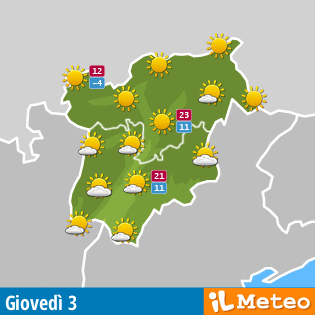The Carnival of Fornesighe
 |
| Italian |

Another typical carnival is held in Fornesighe, picturesque and tiny hamlet of Forno di Zoldo. Main mask of this carnival is the Gnaga (an old lady who brings in the basket the child now grown up). The old lady is obviously tired by the age, while his son is smiling. One interpretation of this unusual character is a good omen for the spring, the carnival obviously takes place between the end of winter and beginning of spring, rich and flourishing (the younger) after a hard and difficult winter (the old lady). It is also a reversal of the typical sequence of events, an aspect present in many carnival representations (in this situation the natural passage of charges and duties from an old mother to an adult son). The Gnaga isn’t a mask with an ancient tradition. It was born in 1897 thanks to Valentino Toldo, emigrant in the Switzerland Romansh, which probably took its cue from the typical characters of the area to create this character. Initially the mask wasn’t designed as you see it today, but it was the same Valentino Toldo to dress up as a woman and to bring in the parade the son.
The others Fornesighe Masquerades
Beyond the Gnaga in the Fornesighe
carnival there is a Matazin that opens the procession, mask of Iberian
origin that prevailed in Italy and in Europe, with colorful dress and
the traditional parade of wooden faces which is also linked to a
competition. Another unique and quite innovative aspect (even if they
are present for several years) is the presence in the streets of the
village and at the typical wooden rustic almost all uninhabited of
authentic iron sculptures representing people involved in ancient
activities and crafts. This idea was born to give a strong human
presence in these corners of the country now sparsely inhabited. Other
typical Zoldo masks, however now abandoned, were:
- Al Compare: black suit with bowler hat and cane privet.
-
Al Coco: character with meta-wool suit, white face made from sheep's
skin to make it look old, at who the people gave a donation (often eggs,
from which the name was born).
- La Comara: the traditional Zoldo dress;
- Al Nuiz: chosen amongst the conscripts, dressed in black and wore a top hat.
- La Nuiza: often played by a male chosen for its feminine features.
-
L’Ampezzana: added later was a woman with traditional ampezzan dress
provided by a woman moved by marriage to the Valle d'Ampezzo in Zoldo,
gave a touch of originality through an unusual dress.
The
carnival was also enriched by the Sonador who played for free. The
conscripts, however, remained in a house designated to prepare lunch,
after having provided for the preparation of breakfast and having
dressed the conscripts.
